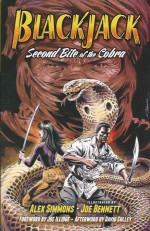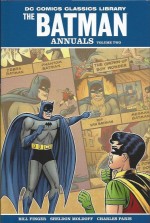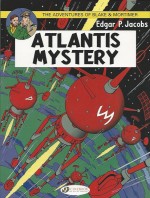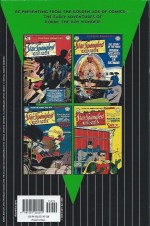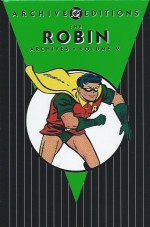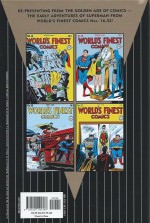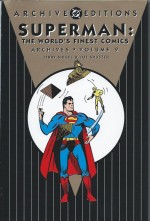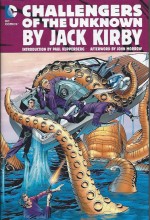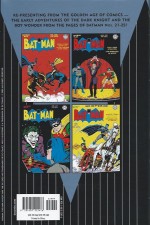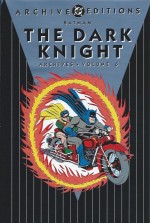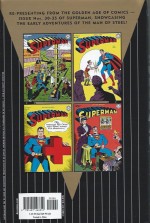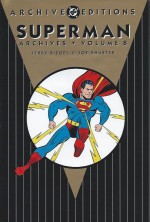
By Joe Simon & Jack Kirby, restored & edited by Michael Gagné (Fantagraphics Books)
ISBN: 978-1-60699-502-0
Simon & Kirby presaged and ushered in the first American age of mature comics – not just with the Romance genre, but with all manner of challenging modern material of real people in extraordinary situations – before seeing it all disappear again in less than eight years. Their small stable of magazines produced for the loose association of companies known as Prize/Crestwood/Pines blossomed and wilted as the industry contracted throughout the 1950s.
As the popularity of flamboyant escapist superheroes waned after World War II, newer yet more familiar genres such as Crime and Horror came to the fore in American comics, as audiences increasingly rejected upbeat fantasy for grittier, more sober older themes in mass entertainment.
Some, like Westerns and Funny Animal comics, hardly changed at all, but gangster and detective tales were utterly radicalised by the temperament of the post-war world.
Stark, uncompromising, cynically ironic novels and socially aware, mature-themed B-movies that would become categorised as Film Noir offered the new civilian society a bleakly antiheroic worldview that often hit too close to home and set fearful, repressive, middle-class parent groups and political ideologues howling for blood.
Naturally the new forms and sensibilities seeped into comics, transforming good-natured, two-fisted gumshoe and Thud-&-Blunder cop strips of yore into darkly intriguing, even frightening tales of seductive dames, big pay-offs and glamorous thugs.
Sensing imminent Armageddon, the moral junkyard dogs bayed even louder as they saw their precious children’s minds under seditious attack…
Concurrent to the demise of masked mystery-men, industry giants Joe Simon & Jack Kirby – who were already capitalising on a True Crime boom – legendarily invented the comicbook Romance genre with mature, beguiling, explosively contemporary social dramas equally focussed on the changing cultural scene and adult-themed relationships. They also, with very little shading, discussed topics of a sexual nature…
Beginning with the semi-comedic prototype My Date for Hillman in early 1947, S&K plunged in full force with Young Romance #1 in September of that year for Crestwood Publications: a minor outfit which had been creating interesting but not innovative comics since 1940 as Prize Comics.
Following Simon’s plan to make a new marketplace from the grievously uncatered-for older girls of America, they struck gold with stories addressing serious issues and hazards of relationships…
Not since the invention of Superman had a single comicbook generated such a frantic rush of imitation and flagrant cashing-in. Young Romance #1 was a monumental hit and the team acted accordingly: swiftly expanding they releasing spin-offs Young Love (February 1949), Young Brides and In Love under a unique profits-sharing deal that quickly paid huge dividends to the publishers, creators and a growing studio of specialists.
All through that turbulent period comicbooks suffered impossibly biased oversight and hostile scrutiny from hidebound and panicked old guard institutions such as church groups, media outlets and ambitious politicians.
A number of tales and titles garnered especial notoriety from those social doomsmiths and when the industry buckled and introduced a ferocious Comics Code, it castrated the creative form just when it most needed boldness and imagination. Comics endured more than a decade and a half of savagely doctrinaire self-imposed censorship until changing society and plummeting profits forced the art form to adapt, evolve or die.
Those tales from a simpler time, exposing a society in meltdown and suffering cultural PTSD, are mild by modern standards of behaviour but the quality of art and writing make those pivotal years a creative highpoint long overdue for a thorough reassessment.
In 1947 fictionalising True Crime Cases was tremendously popular at the time, and of the assorted outfits that generated such material nobody did it better than S&K. That technique of first-person confession also naturally lent itself to the just-as-hard-hitting personal sagas of a succession of archetypal women and girls who populated their new comicbook smash.
Although their output as interchangeable writers/pencillers/inkers (aided by Joe’s brother-in-law Jack Oleck in the story department) was prodigious and astounding, other hands frequently pitched in, so although these tales are all credited to S&K, art-aficionados shouldn’t be surprised to detect traces of Bill Draut, Mort Meskin, Al Eadeh, George Roussos or other stalwarts lurking in the backgrounds…
Michelle Nolan’s ‘Introduction’ deftly analyses the scope and impact trajectory of the innovation and its impact on the industry before the new era opens with ‘Boy Crazy’ from Young Romance #2 (1947) wherein a flighty teenager with no sense of morality steals her aunt’s man with appalling consequences after which ‘Her Tragic Love’ – from the same issue – delivers a thunderbolt of melodrama as a lovers’ triangle encompassing a wrongly convicted man on death row presented one woman with no solution but the final one…
Scripted by Oleck ‘Fraulein Sweetheart…’ (YR #4, 1948) reveals dark days but no happy endings for two German girls eking out existence in the American-occupied sector of post-war Marburg whilst ‘Shame’ from issue #5 dealt with a high flying young lady too proud to acknowledge her own scrub-woman mother whenever her flashy boyfriend was around.
Next is ‘The Town and Toni Benson’ from Young Romance #11 and contemporarily designated volume 2, #5, 1949, which offered a sequel to ‘I Was a Pick-Up’ from the premiere issue (which is confusingly included in the sequel to this volume Young Romance 2: the Early Simon & Kirby).
Here S&K cleverly built on that original tale creating a soap opera environment which could so easily have spawned a series as the now-newlywed couple struggle to make ends meet under a wave of hostile public scrutiny…
On a roll the creative geniuses began mixing genres and Western Love #2, 1948 offered ‘Kathy and the Merchant of Sunset Canton!’ as a city slicker found his modern mercenary management style made him no friends in cowboy country until one proud girl took the chance on getting to know him whilst ‘Sailor’s Girl!’ (Young Romance #13/Vol. 3, #1 1949) explores the troubles of an heiress who marries a dauntless sea rover who works for daddy, confident that she can tame his wild free spirit…
We head out yonder once more to meet ‘The Perfect Cowboy!’(Real West Romances # 4 1949) – at least on set – and the simple sagebrush lass whose head he briefly turned before social inequality and petty envy inform the brutally heavy-handed ‘I Want Your Man’ Young Romance #21/Vol. 3, #9 1950 wherein a young woman of meagre means realises almost too late the cost of her vendetta against a pretty little rich girl…
‘Nancy Hale’s Problem Clinic’ (Young Romance #23/Vol. 3, #11, 1950) offers a brief dose of sob-sister advice as “treatment for the troubled heart†before the magnificent melodramas resume with ‘Old Fashioned Girl’ (YR #34/Vol. 4, #10 1951) as a forceful young woman raised by her grandmother slowly has her convictions about propriety challenged by intriguing men and her own barely subsumed passions, whereas ‘Mr. Know-It-All Falls in Love’ (Young Love #37/Vol. 7, #10 1952) takes a rare opportunity to use a male narrator’s voice when a buttoned-down control freak decides that with his career in order it’s time to marry. But who’s the best prospect?
Another of those pesky triangles then results in one marriage, one forlorn heartbreak, war, vengeance and a most perfect ‘Wedding Present!’ (Young Love #50/Vol. 5, #8 1953) before this cleverly conceived chronicle takes a conceptual diversion after one last tale from the same issue, detailing the all-business affair of ‘Norma, Queen of the Hot Dogs’ and her (at first) strictly platonic partner…
In 1955 the Comics Code Authority began its draconian anodyneing of the industry’s more mature efforts and the Romance titles especially took a big conceptual hit. The edgy stories became less daring and almost every ending was a happy one – for the guy or the parents at least.
Following a superbly extensive ‘Cover Gallery’ featuring a dozen of the most evocative images from those wild and free early years ‘The Post-Code Era’ re-presents the specific conditions affecting romantic relations from the censorious document, followed by a selection of the yarns S&K and their team were thereafter reduced to producing.
Even the art seems less enthusiastic for the wholesome unchallenging episodes which begin with ‘Old Enough to Marry!’ (Young Romance #80/Vol. 8, #8, 1955) as a young man confronts his grizzled cop dad who has no intention of letting his son make a mess of his life, after which a maimed farmer tries to sabotage the budding romance between his once-faithful girlfriend and the brilliant good-looking doctor who cured him in ‘Lovesick’ from the same issue.
The next four tales all originated in Young Romance #85/Vol. 10, #1 1956, beginning with ‘Lizzie’s Back in Town’ as a strong, competent girl returns home to let daddy pick her husband for her (no, really!); two guys fight and the winner gets the girl in ‘Lady’s Choice’ whilst another, less frenzied duel results in a ‘Resort Romeo’ wedding the girl of everybody’s dreams even as ‘My Cousin from Milwaukee’ exposes a gold-digger and reserves her handsome relative for herself…
The bowdlerised tales mercifully conclude with ‘The Love I Lost!’ (Young Romance #90/Vol. 12, #3, 1959) wherein another hospital case realises just in time that the man she wants is not the man she deserves…
This emotional rollercoaster is supplemented with a number of well-illustrated bonus features including ‘Why I Made this Book’, ‘Simon and Kirby’s Romance Comics: A Historical Overview’, a splendid selection of S&K’s pioneering ‘Photo Covers’ (18 in all) and a fascinating explanation of the process of artwork-rehabilitation in ‘About the Restoration’ before everything wraps up with the now-traditional ‘Biographies’ section.
Simon & Kirby took much of their tone if not actual content from movie melodramas of the period (such as Mr. Skeffington, All About Eve or Mildred Pierce and Noir romances like Blonde Ice or Hollow Triumph) and, unlike what we might consider suitable for romantic fiction today, their stories crackled with tension, embraced violent action and were infested with unsavoury characters and vicious backstabbing, gossiping hypocrites.
Happily those are the tales which fill most of this book, making for an extremely engaging, strikingly powerful and thoroughly addictive collection of great stories by brilliant masters of the comics arts and one no lover of the medium should miss…
Young Romance: the Best of Simon & Kirby’s Romance Comics © 2012 Fantagraphics Books Inc. Introduction © 2012 Michelle Nolan Schelly. All rights reserved.


